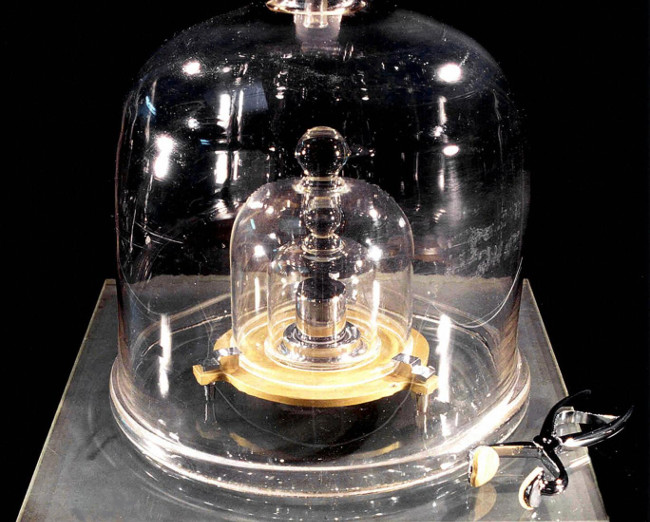The method of replacing the standard platinum one kilogram weight
The inconvenience in using the one kilogram international standard weight scale IPK forces scientists to find other ways to measure.
According to Business Insider, IPK weight is cylindrical, 3.81cm tall, made of platinum. Currently, it is being placed in three interlocking concentric glass cages, in a cellar outside Paris to avoid dust and other things that may distort the mass.
All scales in the world, including pound measurements, must be based on this weight, under the authorization of the General Measurement Conference (CGPM). However, this may have to change.
"The problem with weight in Paris is that it is so precious that people don't want to use it," said Stephan Schlamminger, a physicist working at the American Institute of Standards and Technology in Maryland. Even holding it with your fingers will leave the oil changing the weight even though it is very small. It is rarely left out and never taken to another location.
People interested in the accuracy of a kilogram of mass, like chemists and physicists, often use a copy of IPK to calibrate their measuring device. The problem here is that the volume of copies is also different when compared.

The weight of a kilogram standard made of platinum is in Paris, France.(Photo: BIPM).
This is why in 2005, the International Commission on Weights suggested another way to determine the mass of a kilogram, not to a specific physical object but to the basic characteristics of nature. to be easily replicated in laboratories around the world.
After several delays, the international community of metrologists decided to use mathematical theory to redefine a kilogram. They use the Planc k constant , a frequency-connected quantity that oscillates in the form of a particle with its energy. Using Albert Einstein's famous equation, E = mc2, scientists can convert this energy into mass. In other words, from the mathematical relationship between particle frequency and weight, they can define mass through particle frequency, instead of a specific object.
However, this is only a theory. Because the Planck constant is very small and does not yet have an accurate value, the completion of the above calculation takes a lot of time. In fact, scientists do not expect to be able to complete the calculation before 2018.
The American Institute of Standards and Technology has designed a special generation of machines to measure Planck's constant value. Like many values in quantum physics and relativity, Planck's constant is measured by uncertainty.
The latest machine to date, NIST-4, has collected the first data. These data can calculate the value of an uncertainty of 34 parts per billion, according to an article published in the June 2016 issue of Scientific Review Review of Scientific Instruments. This value is equal to the accuracy of other research groups. They hope that after refining the experimental process, this figure could be reduced to 20 parts per billion.
Globally, scientists are also trying to refine this constant measurement. A research team from the National Research Council in Canada gave the 19 billion billions by the same method in Maryland. Results from other research groups will be gradually announced in the coming months.
After all research teams submit their evaluation results to the Planck constant, a computer program will use these data and a complex statistical program to give the best numbers. This value will be used to redefine exactly one kilogram. In addition to the unit of measurement, more than 20 other units of measurement should also be redefined, including pressure, magnetism and charge - units based on kilograms.
- Redefine the kilogram
- The standard weight has increased
- 'Secrets' of the standard mass of US stored in a vacuum glass cage
- The Kilogram unit is about to be redefined
- Is there a new definition of kg?
- This Friday will determine the existence of the kilogram unit
- Standard weight height 0-5 years old children - the latest version
- Platinum scattered around the Earth: From the asteroid that nearly destroyed humanity?
- Official: 1 kilogram is no longer 1 kilogram, and so are 3 other basic quantities
- Lose weight but just drink each water? Is it true that life is just pink like that?
- Why do people use gold to mint money?
- Lose weight by ... frozen nerve
 'Fine laughs' - Scary and painful torture in ancient times
'Fine laughs' - Scary and painful torture in ancient times The sequence of numbers 142857 of the Egyptian pyramids is known as the strangest number in the world - Why?
The sequence of numbers 142857 of the Egyptian pyramids is known as the strangest number in the world - Why? History of the iron
History of the iron What is alum?
What is alum?